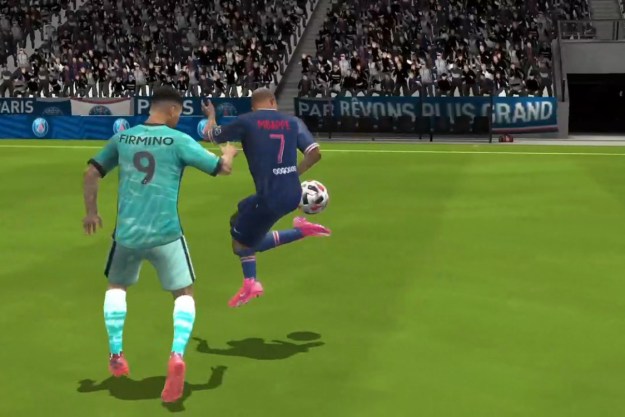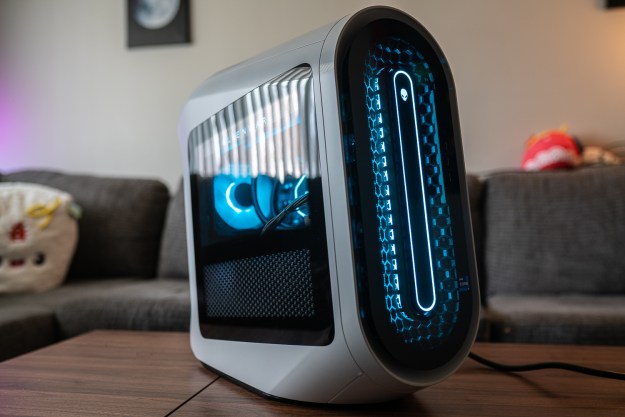- Portability; Software Library; Screen Brightness; Sense of Style
- Price; Durability; Button positioning
Summary
Although a pioneer in the interactive entertainment business, when it comes to dollars and cents, Nintendo doesn’t play around.
Depending on how you look at it, the company’s either been revolutionizing or bleeding the handheld market for nearly two decades.
First to arrive was the monochrome-screened Game Boy in 1989. Nine years later, the Game Boy Color, complete with a rudimentary visual palette, followed.
Enter Game Boy Advance – a unit which actually sported graphics in vibrant hues, versus washed out shades of gray or tinted outlines – in 2001. Don’t forget the Game Boy Advance SP, a clamshell casing and rechargeable battery-equipped update launched circa 2003, either.
Surprise, surprise… Now it’s 2005, and another revision, the Game Boy Micro, is upon us. Sleeker and more stylish than predecessors, plus packing better visibility, the device is also way smaller. Not to mention, at least for those concerned with style or portability, a welcome tagalong, if not necessarily essential purchase.
Features and Design
The device, available in silver and black versions, measures only 4″ (W) x 2″ (T) x 0.7″ (D). Think just a hair larger than cell phones and super-sized packs of gum, or (unless you take after Seinfeld’s George Costanza… and possibly Uncle Scrooge, for that matter) the average citizen’s wallet. What’s more, it weighs but 2.8oz – less, one might add, than keychain equipped with a car remote.
Longer horizontally than the 3.8oz Game Boy Advance SP, it’s also almost half as thin and hefty. Dimensional comparisons are even more telling when stacked against next-generation competitors like Nintendo DS or Sony’s PlayStation Portable. Both are wider, bulkier and (as any attempt to hoist them reveals) much more demanding on the biceps. To put it in perspective, you can comfortably slip the Game Boy Micro into any pants or shirt pocket; doing so with the SP is manageable, yet unwieldy, and outright impossible with the DS or PSP.
It’s easy to see Nintendo’s strategy.
On the one hand, the company aims to wow audiences with a library of over 700 compatible low-cost Game Boy Advance cartridges, including video packs that play 30-90 minutes of cartoons or animated movies. (Sorry, Super Mario Land fans… neither Game Boy nor Game Boy Color titles work with the unit, or even fit in its bottom-mounted slot, so don’t toss older models just yet.)
By the same token, the manufacturer is also angling for teens, hipsters, consumer electronics enthusiasts or anyone else who carries a cell phone and/or worships at the altar of all things tech-related. After all, between a Blackberry or Handspring Treo, iPod and WiFi hotspot finder, what’s another irresistible, pocket-cluttering example of visionary industrial design work to today’s gadget-loving audiences?
Just to seal the deal, Japan’s finest is even including three swappable faceplates with each model. The thought process being, naturally, that gamers and everyday Joes alike will enjoy personalizing their new toy.
True confession, though: you’re probably just as well off with, say, basic black as a swirl-tinted option, camouflage pattern or cover decorated like a pink daisy sporting a ladybug on one painted pedal. Especially, that is, considering popping the [censored] front off requires that you insert a dual-pronged plastic ejector into two side-mounted holes anyway.
Even the console’s amoeba-sized start and select buttons, located above the cartridge insertion bay near the unit’s bottom on a curving overlook, have been subjected to an extreme makeover. That’s right: the buttons now glow blue, so you can actually see them in the dark.
Enough about semantics, though – it goes without saying you won’t be embarrassed about being spotted prodding away at the Game Boy Micro in public. Focus instead on how the gizmo itself handles: shockingly well. Thank a stunning 2-inch color display with adjustable brightness levels, the sharpest Nintendo’s manufactured yet. While we’re sorry to report it doesn’t match the clarity of PSP’s 4.3-inch 16:9 widescreen panel, the monitor is still a cut above predecessors.
Of course, getting used to it at first’s a trick: roughly 0.4 inches are shaved off previous model the Game Boy Advance SP’s screen size. But titles’ color and clarity come through much crisper than ever. In fact, you’ll be blown away by how good the graphics on offerings like Mario vs. Donkey Long look – shrinking them down actually enhances their vibrancy.
Gossip holds the screen’s decreased size may cause headaches and eyestrain in certain viewers over an extended period. However, we experienced no problems whatsoever throughout a week-long testing schedule. Even better, all games designed for use on earlier systems remain fully playable – so much so, no less, that you’ll be pleasantly shocked.
Image Courtesy of Nintendo America
Setup and Testing
Consider role-playing and strategy titles such as Final Fantasy Tactics and Rebelstar: Tactical Command. Boasting reams of text, smaller sprites than normal and angled, overhead camera perspectives, one might suspect these outings would suffer from tighter viewing angles. Not so. If anything, these games look better for the transformation. As in, to the point you can finally see the detail on foes’ armor or vines creeping up latticework throughout the former title’s backgrounds. Or, while we’re at it, better appreciate the aesthetic caliber of cinematic sequences and overall character design presented throughout the latter outing’s sci-fi storyline.
Still, it’s hand-drawn or animated action, arcade, and racing games which benefit most from the transition. Grab your guns and get killing in side-scrolling adventure Metal Slug Advance or duke it out hand-to-hand with comical opponents in Atomic Betty. You’ll notice an immediate difference between experiencing the titles here versus on other Game Boy Advance editions.
Worth mentioning as well: No slowdown, technical glitches or compatibility issues (i.e. corrupted saved games) were encountered during the evaluation process either.
The control scheme’s the same as ever too. You get a directional pad, A and B buttons, plus top-mounted L and R shoulder inputs. In an interesting twist, a single switch – toggle functions by holding the L button while mashing it – located on the right of the system further controls luminosity and volume. And finally (finally!) a proper headphone jack is included on top of the device, eliminating the need for custom-made peripherals.
On the downside, it’s easy to smudge the screen. After all, nothing beats looking at the display only to see a greasy, pizza-stained thumbprint staring back.
Button positioning isn’t necessarily the most comfortable for some either. Certain adult users we put the unit in the hands of complained it was too small for their hands, while others cited a lack of room to rest the thumbs on that the SP offers. Note: none of these issues were raised by kids.
Fragility also presents a problem. The tank-like SP is made to take a beating. We’d be scared to drop the Micro for fear it’d shatter. Read: it’s hard to recommend for use in a playground or romper room environment.
Speaker quality’s not the best either. While suitable enough to annoy your spouse or first class cabin companions with, gamers won’t be blown away. Then again, some sacrifices are worth making for convenience.
Nor, for that matter, does rechargeable battery life improve – you’re still looking at around 10 hours. (Not that we’re complaining overly much, considering it’s the most for a handheld gaming system.)
Image Courtesy of Nintendo America
Conclusion
The biggest issue here, is cost.
The Game Boy Micro retails for $99.99. If you own any earlier model, an upgrade’s hard to justify, considering the unit does essentially the same things. Likewise, a Game Boy Advance SP – still available for purchase – costs only $79.99. Distant cousin the Nintendo DS (which touts twin 3-inch displays, wireless multiplayer and touch-screen capabilities) is capable of playing all Game Boy Advance cartridges as well as original games too. It costs only $30 more.
Nevertheless, who are we kidding? For the frequent flier or gamer who’s got to have it all, the Micro is an excellent fit. Presuming you fall into either of the aforementioned categories, hey… Let the games begin.
Pros:
– Small as sin
– Adjustable, brightly backlit screen
– Compatible with all GBA titles
– Idiot-proof interface
– Affordable software
Cons:
– Overall price point
– Hard on the thumbs
– Screen smudges easily
– Fragile construction
– Middling audio quality
Editors' Recommendations
- Best Nintendo Switch deals: consoles, games, and accessories
- Best gaming laptop deals: Alienware, Razer, Asus and more
- What’s free on the Epic Games Store right now?
- The best games on Xbox Game Pass right now (May 2024)
- A Sonic game that plays like Fall Guys is coming to mobile






